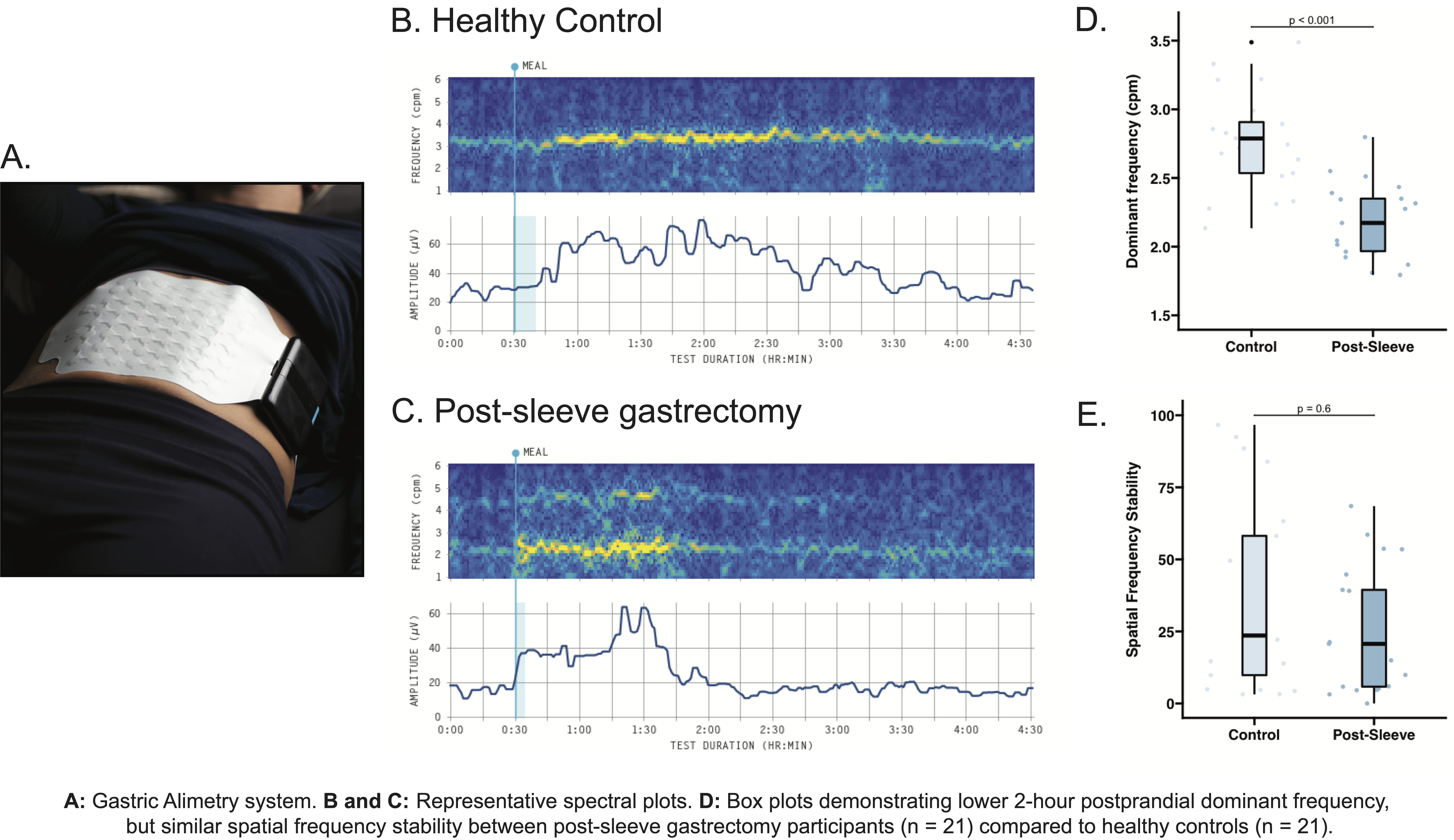THE IMPACT OF SLEEVE GASTRECTOMY ON THE GASTRIC CONDUCTION SYSTEM MEASURED BY BODY SURFACE GASTRIC MAPPING
Sam Robertson1, Daniel A. Carson1, Tim H. Wang1, Jim Hsu-Shun Wang1, Stefan S. Calder2, Christopher N. Andrews3, Chris Varghese*1, Gabrielle Sebaratnam1, Jonathan S. Woodhead2, Armen A. Gharibans1, John A. Windsor1, Gregory O'Grady1
1Department of Surgery, The University of Auckland, Auckland, Auckland, New Zealand; 2Alimetry Ltd, Auckland, New Zealand; 3University of Calgary, Calgary, AB, Canada
Introduction:
Sleeve gastrectomy is an effective treatment for obesity and type 2 diabetes, but can be complicated by gastro-oesophageal reflux, nausea, vomiting and food intolerance. A large portion of the stomach's greater curvature is removed during this procedure, including the normal gastric pacemaker region. The long-term effects of pacemaker resection on gastric electrophysiology have not been evaluated, and may be related to postoperative complications. The aim of the study was to evaluate the impact of sleeve gastrectomy on gastric electrophysiology using body surface gastric mapping (high-resolution electrogastrography).
Methods:
Patients at least 3 months post sleeve gastrectomy were recruited, and matched by age and sex to healthy controls. Gastric myoelectrical activity was measured using Gastric Alimetry, a non-invasive high-resolution body surface gastric mapping system, comprising 64 electrodes on a conformable array and a wearable reader (Alimetry, Auckland). Baseline recordings were taken for 30 min while fasted, and for 4 hours after a standardized meal. Symptom data were obtained from validated questionnaires and the patient reported gastric symptom burden score (GSBS, score 0 - 70).
Results:
Sleeve gastrectomy patients (n = 21) reported low symptom burdens (median PAGI-SYM score 0.60 vs 0.10 in 21 matched controls, p<0.001), expressed during testing as only mild discomfort after eating (median GSBS 2 vs 0 in controls, p=0.002). Gastric slow wave frequencies were consistently lower in patients compared to controls (median 2.2 vs 2.8 cycles per minute, p<0.001). Gastric myoelectrical amplitude was also lower in sleeve gastrectomy patients (16.5 vs 25.2 µV; p=0.006), although this difference may be due to patients having a greater BMI (mean 32.3 vs 26.5; p<0.001) causing signal attenuation. The power ratio (ratio of postprandial to fasted amplitude) was comparable (1.5 vs 1.4; p=0.6). Spatial frequency stability analysis revealed that slow wave propagation patterns were similar between patients and controls (p=0.4).
Conclusion:
Gastric Alimetry is an effective tool to non-invasively assess changes in gastric electrophysiology following surgery. Sleeve gastrectomy results in significant changes in gastric myoelectric activity. The decrease in intrinsic frequency with highly organized spatial patterns imply that a secondary gastric pacemaker assumes control proximal in the remnant stomach and drives effective distal entrainment. This first study reported low symptom burdens, and further studies will now be conducted to investigate patients with post-operative symptoms. 
Back to 2022 Abstracts
